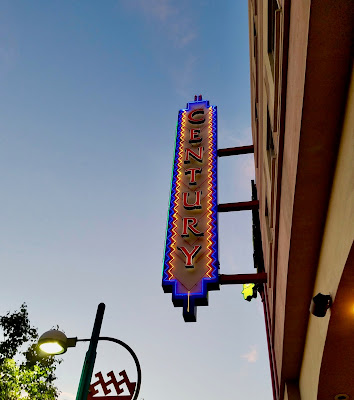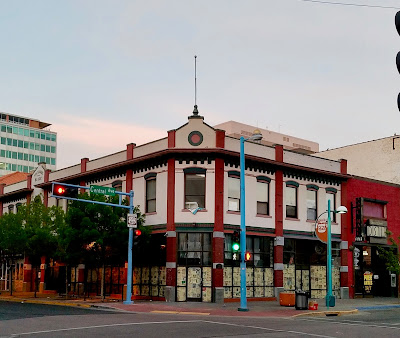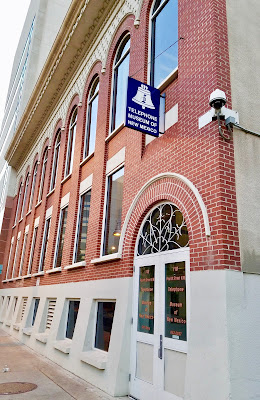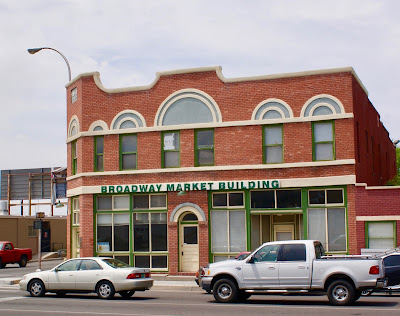From Dave Brigham:
In the first post about my recent trip to Albuquerque, New Mexico, I wrote about the place where I lived with some friends 29 years ago, and some of our hangout spots (see May 24, 2017, "The Land of Enchantment"). In this installment in my three-part series, I'll cover some cool things I saw downtown on an early-morning walk.

I was happy to see that El Rey Theater is not only still standing, but also active. My friends and I saw the Rollins Band here back in 1988 during our three-month stay in the Duke City. Built in 1941, the theater closed for a time in 2014 after the owner had money problems, according to reports I read online. For a little history of El Rey, check this link on the theater's web site.
Albuquerque is known for its murals.

This set is located on the patio of a former Studebaker Automotive Company dealership and garage, now home to Boese Brothers Brewery. Our visit was too quick. Next time I'll hit this place.
"The City of Albuquerque's Public Art Program, one of the oldest in the country, began in 1978, with the passage of the Art in Municipal Places Ordinance. This bold initiative set aside 1% of city construction funds derived from the general obligation bond program and certain revenue bonds for the purchase or commission of works of art." -- from VisitAlbuquerque.com.
Murals feature Native American images, train conductors, old cars and historic buildings, trees, peace signs, traffic jams, street scenes, civic celebrations, hallucinations, classic motel signs, and much, much more. Below is one of many that caught my eye, and one of the few in decent light at that early hour.

The mural, in part, depicts the Alvarado Hotel, which was torn down by the Santa Fe Railway in the 1960’s. The mural also shows how some, probably most, people felt about that demolition. For more on the once-grand hotel, read this Santa Fe New Mexican article.
For more on the city's murals, read this article and also this one.

The Century Theatre sign isn't historic or even made of neon (I don't think) but it looks really cool, especially at sunrise. The complex was constructed as the first phase of the Downtown Revitalization plan led by Hartman + Majewski and the Historic District Improvement Company. Century traces its history to 1940; the company was acquired by Cinemark in 2006.
I would have loved to have spent much more time wandering through Albuquerque's downtown. The architecture is quite different from what I see around Boston, more colorful and constructed with different materials and with much better signage. I was a bit concerned being in a strange environment so early in the morning -- just me, the birds and the bums, I told myself. Also, I needed to get back to my hotel to start waking up my traveling buddies for that day's adventure, which I'll chronicle in the final post of this three-part series.

Rosenwald Brothers department store was built in 1910 and added to the National Register of Historic Places in 1978, per Wikipedia. It is now office and municipal space.

The Yrisarri Block was erected in 1909, and sits across the street from the Rosenwald building. I love the colors and architectural details on this place, which houses several small businesses, including a bar called Downtown Distillery. The block was formerly home to Maisel's Indian Trading Post. For more details about the Rosenwald and Yrisarri buildings, check this link.

Finally, the Telephone Museum of New Mexico, a place that surely would've been worth a visit. I dig the sign, and its juxtaposition with the "Big Brother" video camera.
The last installment of this mini-series will focus on my visit to some historic ruins an hour north of the city.
















